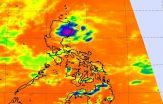(Press-News.org) Everybody grieves the death of a loved one, and the process helps most mourners adjust to their loss.
"Charlie Brown was right," said Christopher Layne, a psychologist and researcher at the Semel Institute for Neuroscience and Human Behavior at UCLA. "There is good grief."
But for some people, bereavement becomes a problem in itself, prolonging suffering and impairing functioning. For grieving children and adolescents persistent complex bereavement disorder can derail social and academic development at a time when children and adolescents need to master skills and form aspirations to succeed later in life.
"It's difficult to think about a future career or who you're going to be if you don't see yourself having a good life without the deceased," said Layne, who is a program director at the UCLA/Duke National Center for Child Traumatic Stress.
To help identify children and adolescents with the disorder, Layne joined with Julie Kaplow, a clinical child psychologist at the University of Texas Houston to develop an assessment tool for bereaved youth.
With 39 straight-forward questions and an easily intelligible rating system, the "Persistent Complex Bereavement Disorder Checklist -- Youth Version" is the first assessment tool of its kind. The UCLA-University of Texas psychological test aims not only to help identify kids and teens whose grief may have taken a wrong turn but also attempts to gauge the severity of their symptoms. Authors hope that educators, mental health providers, pediatricians, hospice providers and grief support communities will use the checklist.
"For children and adults, having an age-appropriate checklist to assess symptoms is a critical first step in identifying bereaved youth who may need specialized support," said Kaplow, an associate professor of psychiatry and behavioral sciences at the University of Texas Health Sciences Center at Houston and director of its Trauma and Grief Center for Youth.
Hallmarks of maladaptive grief include trouble accepting the death, emotional numbness, bitterness or anger and excessive efforts to avoid reminders of the loss. Sufferers may long to die in order to be with the deceased, feel alone or detached from others or feel that life is empty or meaningless, Layne said.
Persistent complex bereavement disorder can put sufferers at risk for major medical problems down the line, including cardiac disease, hypertension, cancer and immune disorders.
Complicating matters, individuals with the bereavement disorder are at risk for a host of other psychiatric disorders, including depression, post-traumatic stress and substance abuse. And those disorders can mask maladaptive grief, reducing the likelihood that sufferers will be diagnosed and routed to proper care, Layne said.
But until now the only assessment instruments for maladaptive grief have been designed for adults, primarily elderly adults -- mostly widows.
Written with language more easily understood by bereaved youth from 8 to 18, the new test is designed to detect symptoms that can differ from those found in adults.
Where assessment tools designed for adults look for symptoms of at least one year in duration, the youth version is designed to sends up red flags when symptoms persist for just six months.
"One year is simply too long a period of time for a child to suffer because of the risk for lost developmental opportunities," Layne said.
The checklist also takes into account uniquely childlike characteristics of young maladaptive grief such as rapidly changing moods.
"Children can be crying and grieving over the death of their mom or dad and then two minutes later be running around and laughing and playing with their friends," said Layne, who is the director of education in evidence-based practice at UCLA/Duke National Center for Child Traumatic Stress. "Adults might incorrectly assume that the problem is something children are able to shrug off because they are not despondent for days on end like you might expect with an adult."
The assessment tool comes at a time of increasing interest in Persistent Complex Bereavement Disorder. The disorder was added as a proposed diagnosis to the latest issue of the American Psychiatric Association's Diagnostic and Statistical Manual of Mental Disorders, which offers a common language and standard criteria for the classification of mental disorders. Checklist users can opt to participate in a data collection process that is part of ongoing research that may lead to the disorder's full adoption or further refinement in a future issue of the manual.
The checklist's third author is Robert Pynoos, a UCLA professor in residence of psychiatry and author of the world's most widely used assessment tool for post-traumatic stress disorder in school-aged children and adolescents.
For the new assessment tool, Layne, Kaplow and Pynoos used interview and assessment data from more than 230 bereaved children and adolescents. The authors also convened a panel of 10 internationally recognized grief experts who reviewed and rated each item according to its developmental appropriateness and relevance for assessing childhood grief. The resulting psychological test takes between five and eight minutes to complete.
A treatment plan can then be individually tailored according to the child's specific needs, strengths and life circumstances. Treatment often includes helping the child identify personal loss reminders, develop coping skills to manage grief reactions, put into words thoughts or feelings that they have not been able to express and find comforting ways to feel connected to the deceased while accepting the reality of the loss.
"What has been inspiring to us," said Kaplow, "is that children often react to the test by saying, 'So other kids feel this way, too? I thought it was just me.'"
INFORMATION:
PULLMAN, Wash.--Washington State University scientists have found that glyphosate, the main ingredient in the herbicide Roundup, does not accumulate in mother's breast milk.
Michelle McGuire, an associate professor in the WSU School of Biological Sciences, is the lead researcher of the study, the first to have its results independently verified by an accredited, outside organization.
Her findings, presented at the Federation of American Societies for Experimental Biology Conference on July 23 in Big Sky, Mont., show that glyphosate, the most used weed-killing chemical ...
Sometimes consumers might appreciate a pop-up ad that reflects the merchandise they were recently browsing online, and sometimes they just might decide to spike it and thereafter avoid the seller that placed the ad. Retailers can learn about this behavior in the September 2015 issue of the Journal of Retailing.
In "The Importance of Trust for Personalized Online Advertising," Marketing Professors Alexander Bleier, of Boston College's Carroll School of Management, and Maik Eisenbeiss, of the University of Bremen, show how trust in a particular vendor affects the degree ...
When Tropical Depression 12W formed on the northeastern tip of the Philippines in the Luzon Region, NASA's Aqua satellite captured infrared data on the newborn storm.
The Atmospheric Infrared Sounder (AIRS) instrument that flies aboard NASA's Aqua satellite captured infrared data on Tropical Depression 12W. AIRS data showed some cloud top temperatures were as cold as -63F/-53C on July 23 at 5:17 UTC (1:17 a.m. EDT). Cloud top temperatures that cold have been shown to generate heavy rainfall.
Tropical Depression 12W (TD12W) formed at 0900 UTC (5 a.m. EDT) on July 23 ...
Fairfax, Va., July 22, 2015 - The American Society for Radiation Oncology (ASTRO) is concerned about proposed additional payment cuts to radiation therapy detailed in the Centers for Medicare and Medicaid Services' (CMS) proposed Medicare Physician Fee Schedule (MPFS), released July 8, 2015, which will take effect on January 1, 2016. Freestanding centers estimate that the combined impact of the Medicare proposals would result in a five to seven percent reduction in payment for radiation oncology services at community-based centers, although the cuts will vary and could ...
Tropical Storm Felicia was born early on July 23 in the Eastern Pacific Ocean, over 400 miles southwest of Baja California's southern tip. NOAA's GOES-West satellite provided an infrared image of the newborn storm.
Previously known as tropical low pressure area "System 99E," the storm finally developed after days of remaining unorganized. NOAA's GOES-West satellite captured an image of Tropical Storm Felicia on July 23, 2015 at 15:45 UTC (11:45 a.m. EDT). Satellite imagery shows that a curved band of thunderstorms are wrapping around the southern quadrant of the storm.
The ...
Researchers in the Division of Hematology, Oncology and Blood & Marrow Transplantation at Children's Hospital Los Angeles have shown greatly improved outcomes in using stem cell transplantation to treat patients with a serious but very rare form of chronic blood cancer called juvenile myelomonocytic leukemia (JMML).
Allogeneic hematopoietic stem cell transplantation (HSCT) involves the transplantation of stem cells from a donor, which may be derived from bone marrow, peripheral blood or umbilical cord blood. The recipient's immune system is usually destroyed with radiation ...
Researchers from Scripps Institution of Oceanography at UC San Diego have accurately mapped out the movement of the devastating 7.8-magnitude Nepal earthquake that killed over 9,000 and injured over 23,000 people. Scientists have determined that the earthquake was a rupture consisting of three different stages. The study could help a rapidly growing region understand its future seismic risks.
The Himalayan region is particularly prone to earthquakes and this study will serve as an important benchmark for understanding where future earthquakes may occur, especially ...
SEDE BOQER, Israel...July 23, 2015 - Ben-Gurion University of the Negev (BGU) and University of Western Australia researchers have developed a new process to develop few-layer graphene for use in energy storage and other material applications that is faster, potentially scalable and surmounts some of the current graphene production limitations.
Graphene is a thin atomic layer of graphite (used in pencils) with numerous properties that could be valuable in a variety of applications, including medicine, electronics and energy. Discovered only 11 years ago, graphene is one ...
The physical symptoms of weakness and fatigue from multiple sclerosis (MS) can rock a person's confidence and ability to engage in what he or she feels is important, from being a good parent and friend to taking up a hobby, according to Matthew Plow, assistant professor from Case Western Reserve University's Frances Payne Bolton School of Nursing.
To help people with MS maintain autonomy and independence, a team of researchers set out to determine what factors prevented individuals from undertaking and enjoying the activities they believe are most important to live fulfilling ...
Researchers at the University of Birmingham have made a breakthrough in understanding how mutated genes in leukaemia reprogram blood stem cells and send them spiralling out of control.
The findings help to explain the early development of leukaemia, representing the essential first step to developing new treatments for patients based on these findings.
A study, published in Cell Reports by Professors Peter Cockerill and Constanze Bonifer, investigated the role of one specific mutation in the FLT3 gene found in acute myeloid leukaemia (AML).
AML is diagnosed in ...

